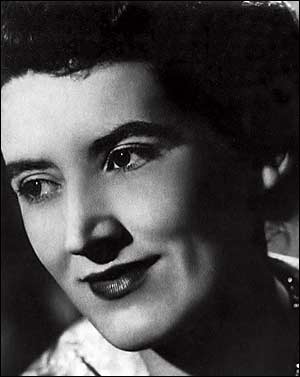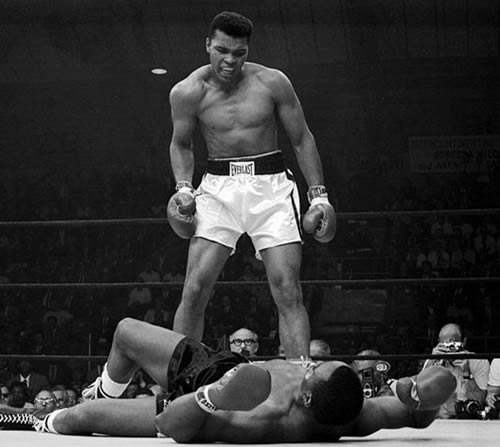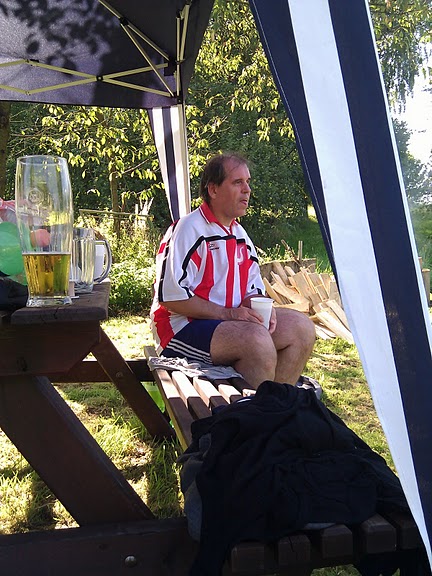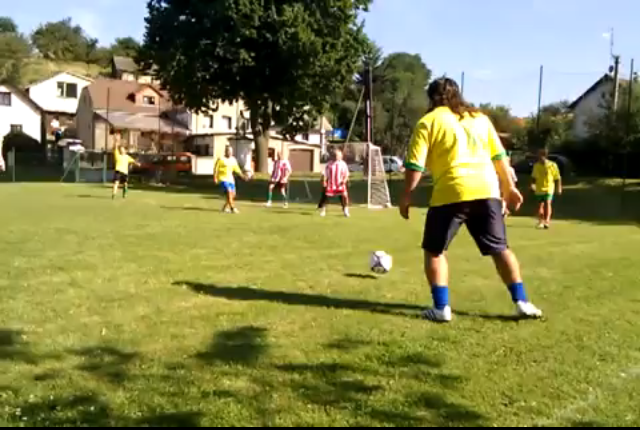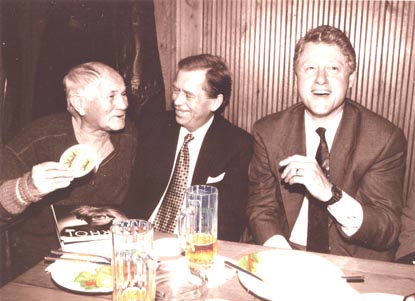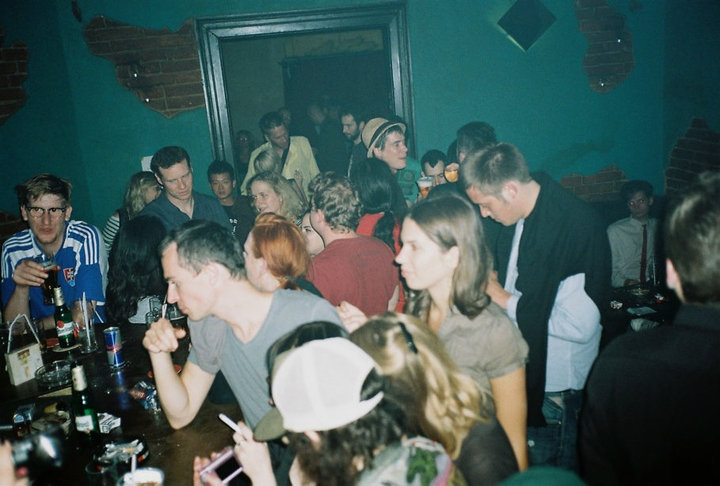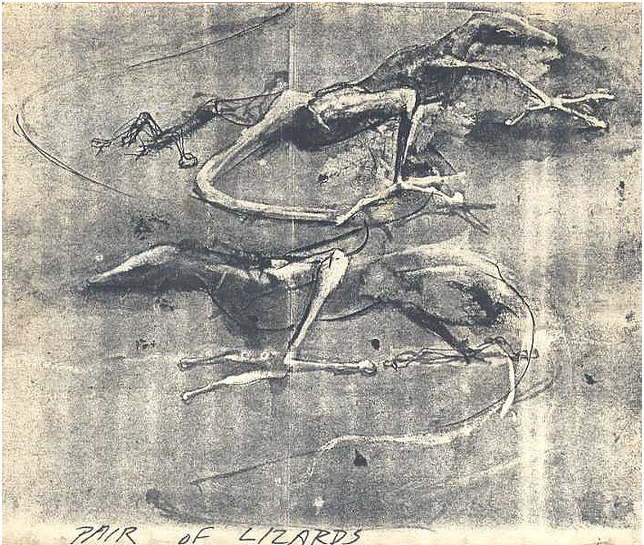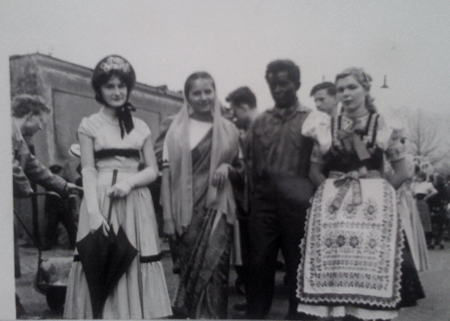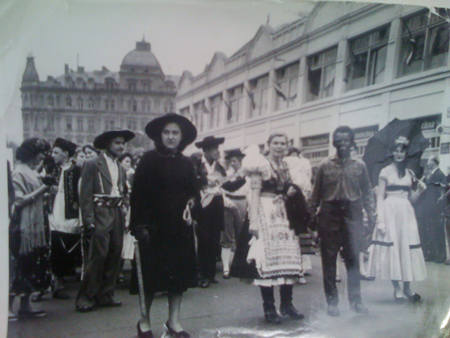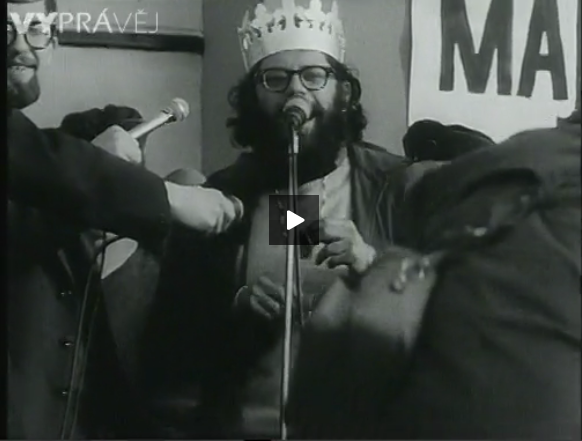Check out these photos my wife’s friend posted on Facebook yesterday. Apparently, he was shopping at the Ross Dress For Less at El Cerrito Plaza over the weekend when some buffoon drove her car through the storefront into the store. That’s the culprit standing to the right of the car in the second photo.
Month: August 2010
The Hatto Affair
There are frequent postings about music on this blog. I enjoy hearing the clips, but am absolutely clueless when it comes to the different types of rock, the names of bands and performers, the history of their departures from bands and return to them, etc. So now I’m writing about music and musicians that I do know something about. Not exactly in retaliation, but more in the interest of diversity.
In 2005 I read an article by the Boston Globe‘s music critic Richard Dyer about Joyce Hatto. The headline ran: “After Recording 119 CDs, a Hidden Jewel comes to Light. Fans and Critics Have Long Overlooked Pianist Joyce Hatto.” The CDs appeared under the Concert Artist label, created by her husband, William Barrington-Coupe. (Like his friends, I’ll call him Barry for short.)
This was an amazing pianist. At age 71, wracked with cancer, she was recording in her husband’s studio virtually the whole classical repetoire, from J.S. Bach to Messiaen; a feat as yet unattempted by man or woman. The recordings were all first class according to Dyer, who has a discriminating ear; and on top of that she was English. In the entire 20th century, England had produced only three memorable pianists: Solomon (who, by his novel use of first name only, anticipated Madonna by 90 years), Clifford Curzon, and Myra Hess. Even better, Hatto looked English: a bit horsey and Camilla-like because of her long face and strong jaw.
Right away, in great excitement, I sent Dyer’s article to my brother-in-law, who is a musicologist and amateur pianist. Living outside of New York City, he goes to tons of piano recitals there. It was with some satisfaction that I told him of a pianist that he’d never heard of—as Dyer put it, “[t]he greatest living pianist that almost no one has ever heard of.” We exchanged Hatto CDs and emails about them.
Before the Globe article, excitement over Hatto was pretty much confined to bloggers. After Dyer’s article and another one in the prestigious magazine Gramophone, the enthusiasm over Hatto spread to the larger musical world. The discovery of overlooked genius generates a lot of excitement. I suppose part of the thrill is egotistical: being a Hatto fan puts one in the know. But at least in Hatto’s, case, there’s a deeper satisfaction. Hatto’s career on the concert stage had been unremarkable, gaining her little recognition. By an unforgiving rule that condemns most of us to obscurity, people usually get the recognition that they merit. But in this case, the rigid test of time turns out to be fallible: an unregarded pianist turns out to be the greatest one alive. This is something to celebrate.
The extraordinary stream of flawless recordings continued up to her death in 2006. Then, the next year, the fraud collapsed. All of her recordings, but one (she actually did play the piano) were made by other pianists, whose recordings her husband had swiped from other labels.
It seems that by the 1970s, Hatto and Barry concluded that the critics, who had given her concerts mixed reviews, would never accord her the acclaim she deserved. So she retired from the concert hall; the explanation, given to anyone who cared, was ovarian cancer. (She did in fact die of cancer at age 77; but her oncologist is quoted in a couple of sources as saying the cancer didn’t appear until the 1990s.) Her husband had long been in the recording business; out of his technical expertise, great knowledge of the piano world, and musical taste they reinvented her career.
One thing that made the fraud possible is the amazing number —a glut, really —of excellent pianists around, then and now. Even my brother-in-law hasn’t heard all their names. Barry pirated performers who were at once first class and obscure sure to be applauded but unlikely to be recognized. A great influx of talent had poured in from Eastern Europe, where it had been dammed up by the Iron Curtain. From the other side of the globe comes a flood of Chinese pianists who, as children obedient to their parents, out-practiced everyone else.
The fraud had been suspected before 2007 among some bloggers. Barry had overreached by releasing CDs of piano concertos, Hatto ‘playing,’ in each case with the National Philharmonic Symphony Orchestra under the direction of Réné Köhler. No one had heard of either. To answer the suspicious queries of a German researcher, Barry came up with a Köhler biography; Köhler had studied in Krakow, not at the conservatory, which was closed to Jews, but at a university. He survived the Treblinka death camp, where a German officer had crushed his left hand, only to perish in the Soviet Gulag. The investigator checked with the university to find that there was no record of K’s attendance and not even a music department there. Clearly Barry tossed off K’s biography without much if any advance thought; I imagine he had fun improvising his lies.
The name of the orchestra is a riot of redundancy, suggesting that Barry had a sense of humor too. “Philharmonic” means “symphony” (the New York Philharmonic); “symphony” can be synonymous with “orchestra” (the Boston Symphony). So, in a redundancy pointed out by a blogger, Hatto, in playing with the National Philharmonic Symphony Orchestra, plays with the National symphony symphony symphony.
Some people doubted the Hatto marvel; others were too happy with it to give it up. The controversy was settled by iTunes. From the Wikepedia article on Hatto: “When Brian Ventura, a financial analyst from Mount Vernon, New York, put the recording of Liszt’s Transcendental Etudes credited to Hatto into his computer, the Gracenote database used by the iTunes software identified the disc not as a recording by Hatto but as one by László Simon.” The database identifies a CD by the timings of its tracks; and the timings of Hatto and Simons CDs were identical. This discovery led eventually to a waveform analysis of the recordings by an audio lab in England that showed them to be identical in every respect.
On other CDs, Barry forestalled detection by tampering with the timing of the pirated tracks. He managed to speed up or slow down the Hatto version without altering the pitch, so that the Hatto performance did sound different from its original. Another of his ploys was to steal from multiple pianists in a single piece. For a sonata, say, consisting of three movements and three corresponding tracks, he deployed a different pianist for each track.
For some music critics, the exposé was quite embarrassing. In 1992 a critic reviewing Yefin Bronfman’s rendition of the Rachmaninov 3rd Concerto wrote that “it lacked the sort of angst or urgency that has endeared Rachmaninov to millions” and that Bronfman sounds “oddly unmoved by Rachmaninov’s slavic idiom.” Fifteen years later, the same critic wrote of Hatto’s release of the same recording: “stunning… truly great… among the finest on record… with a special sense of its Slavic melancholy.” I felt kind of foolish too, having waxed so enthusiastic over her recordings.
Once Hatto gained fame from the fake recordings, the couple were very happy to be interviewed, and in their interviews retroactively slathered her new-found prestige onto her earlier career. In a profusion of free-from fictions, she was playing for and being advised by the greatest musical figures in the mid 19th century. As all of them were dead by this time, who was to object? Over- the-top reviews of her concert performances surfaced. “Her performance of the Brahms Piano Concerto in D minor was a triumph. The technical virtuosity was compelling in its complete nonchalance but it was the blazing passion that brought the huge audience to its feet.” (I love the “huge” audience). Or: Her performance of Brahms’ Paganini Variations was “dispatched in a seamless riot of ecstatic bravura with underlying deep musical feeling . . .”
In fairness to Hatto and Barry, it doesn’t seem that this was just simple, cold-blooded fraud. It was a tour de force of imagination. The two invented a whole life for herself in an amazing amount of detail that grew with each conversation they held. A New Yorker article by Mark Singer entitled “Fantasy for Piano” gives you a good sense of their powers of invention. They moved so easily from fact to fiction that you can’t be sure which you are hearing. I don’t think that they could tell the difference either, and that’s where the story gets scary.
Reader Mailbag: Attacking and Defending and Associated Research Partners
In response to the Attacking and Defending post from two weeks ago, I received the following emails from friends:
Mike:
“I didn’t know you were a boxer. i am a pugilist myself, although i haven’t picked up the gloves in about three years. where are you sparring?”
Luke:
“http://en.wikipedia.org/wiki/Chess_boxing”
[And a bit later:]
“I wondered why you never mentioned it. Me and Mike used to box together — was kinda fun.”
This is all good, except that I didn’t write that post about boxing. Krafty did. It’s apparently a little-known Mock Duck fun fact that this blog has multiple authors: I, Dan, write most of the posts; Krafty writes some; and then my Dad, under the Grandjoe nom de plume, has written three. It’s definitely a design flaw of the template I’ve chosen that the author name is so de-emphasized, so I don’t blame people for being confused (and it’s interesting to suddenly learn of their love of boxing, which you didn’t know about before). But, if something you read here seems to directly contradict a previously-espoused attitude or present a impossible gap in the space-time continuum (such as me being in LA and Austria at the same time, say), check the byline– it’s quite possible (although increasingly unlikely) that someone besides me wrote it. Once I even got a text message from a friend asking me about the contents of a post before I’d even read the post myself– boy, was that confusing.
[Note: I’m not actually mad about or annoyed by these incidents– that would be lame. It’s just something to write about. Important distinction.]
—–
Meanwhile, in response to my account of the pre-written term paper industry, the Term Paper Kingpin wrote in with a spirited rebuttal where he presents this alternate history of our meeting:
“I guess honest men may differ in their recollection. As I recall it, I met Mayer when I was handing out copies of my self-published memoir (“Epiphanies in Gossamer: A Texas Hill-Country Boyhood”) on a street corner in the Mission District of San Francisco in exchange for donations. I was trying to make a living with an Esperanto Theosophy newsletter, and Mayer convinced me that if we went into termpapers we would soon be “farting thru silk,” a hair-raising vulgaism that I have been unable to banish from memory.
I seem to recall something about an Associated Research phone number, which was our only recourse after Pacific Telephone primly refused to give us an “unlisted” business account.”
The Horka Cup
Last weekend, I journeyed to a little village, Horka, where a friend of mine has a cottage. For the second year now, the village organized an annual soccer tournament, affectionately called The Horka Cup. On Saturday, I went out to play goal keeper for Team Foreigner, made up of myself and English friends of mine (including the guy who has the cottage).
I arrived in late morning on one of these little Mr. Rogers-like country trains they have in Czech, which was even more ramshackle and filled with smelly fatsos than usual:
Note that Horka is officially called Horka II, to differentiate it from another Horka which is right near by. This is a treacherous aspect of Czech villages– they often tend to repeat the same names over again and over again. At my wedding, my headstrong friend jumped in his car, set his GPS to the name of the village where the wedding was taking place and zoomed off several hours in the wrong direction to a town with the identical name on the other side of the country. With my best man’s suit in the trunk of his car. Anyway, I digress…
Our competition for the event was Team Village Lie-Abouts, composed of random Horka guys, and Team Of Cops From Neighboring Zruč, who dazzled all with their smart striped uniforms:
I have a feeling it was probably a good day to go on a crime spree in Zruč.
From an anthropological point of view, every genus of Czech village male was on display, including Big Mustache Man and Fearsome Mullet Man. The latter was particularly impressive in this instance– a vast, billowing specimen whom we nicknamed The Horka Maradona. Or just The Horkadona, for short:
Despite the blazing heat and a scarcity of players (this is why there are no good pictures of the action– everyone was either pressed into service or slumped over in exhaustion on the sideline), we managed to beat the team of local village guys before falling to the Zruč cops in the de facto final. Here’s our captain accepting a tiny little plastic cup in honor of our second-place finish:
Once it became known that there was an American playing goal, this became a source of great amusement to all of the Czech guys there who referred to me as ‘The American!’ for the rest of the day. I think it was funny to them in a sort of Cool Runnings way, like ‘Look at those silly Jamaicans trying to ride a bobsled.’ I didn’t embarrass myself too much, though, and was asked to join in a casual scrimmage after the official matches, which meant another 90 min or so of standing in the blasting afternoon sun.
Anyway, once the games were over and the awards were handed out, the afternoon ended in the way that all things end in Czech villages:
Fittingly, the Horkadona manned the grill, and produced some excellent sausages:
Drinking with Czechs
Last night, I went for beers with colleagues from my first, bad job in Prague (an agency that spat out an endless supply of banner ads and sitelets for Vodafone– my co-workers were really nice, but the work was shallow and boring). When I started this first job, I was naturally curious about the drinking habits of my Slavic colleagues, and especially about a certain workplace convention– previously unknown to me– called ‘shots in the office’. Back in the US, I worked at a few places that contrivedly attempted to let their hair down on Fridays and have would beers in the office as the weekend approached, but hard liquor was another story altogether. At this first Czech job, in contrast, I’d be intently hunched over my computer attempting to meet an end-of-day deadline for some inane Vodafone thing when I’d feel a discreet tap on my shoulder, turn around and see Jirka or Lenka or Pavel making the international ‘let’s have a shot’ motion. A bunch of us would scurry into the conference room, where somebody would produce a bottle of slivovice (plum schnapps). Everyone would toast and down a small shot, then busily run back to their battle stations to resume working. Lest this sound too primitive and iron-curtain-ish, I should add that these co-workers were distinctly up-and-coming-professional types– hardly anyone in the office smoked cigarettes, and the general office atmosphere was very trendy and hip in manner of ad agencies everywhere.
Last night, we met at a bar called U Zlatého Tygru (‘At the Golden Tiger’) that’s one of the most representative classic old fashioned Czech bars. The moment I walked in, I thought, “I wonder if this is the bar that Václav Havel famously took Bill Clinton to?”. Soon enough, I was informed that it in fact was the very bar. I would tell you more about the place, but it was hard to see with water gushing out of my eyes from the 50 cartons of cigarette smoke floating around in the air. Rest assured that I was having as good a time as Bill is enjoying in the photo above. I wonder who the guy on the left is– trusted Havel advisor, or random barfly? I wonder what kind of Czech bar food they ate (probably something hideous, given the year). I wonder if Bill remembered to order some wiener schnitzel to go for Monica (heh heh).
Anyway, as I’ve mentioned before here and here, Czechs sure do love their old fashioned bars. There are few places where anyone feels inclined to try to look or act cool– generally, a kind of relaxed slobbery prevails. As evidence, I present this handsome specimen whom I photographed a few years ago at the spot around the corner from my current job (on a Friday evening, no less– one can only assume that this was his special ‘going out’ outfit):
Associated Research Partners
Last night, I was talking with friends about the some of the dreadful stopgap jobs we held between the ages of, let’s say, 18-23. I know a few purposeful, self-directed people who proceeded straight from college onto meaningful, rewarding work, but lord knows I wasn’t one of them. Pretty much the consummate late-bloomer, I found these people as baffling and exotic as a hetero unicorn. In my recollection, the period of entering the workforce felt much more like the opening minutes of Saving Private Ryan: trepidatiously heading out in a vast, dangerous expanse where the rules of engagement are not very clear and you’re liable to be met with a hail of bullets. (Now if only it had been more like the opening minutes of Shaving Ryan’s Privates– that would have been much more accommodating).
My friend got things rolling by describing a dubious job he held where his role was to enter various high-rises, walk into a particular establishment and pretend that he was doing student research on the company– in actuality, he was in the pay of some giant realtor and was supposed to rat out when the company’s lease expired so his overlords could swoop in and take it. This immediately hit upon a common thread in our crappy early jobs– most of them had a distinctly morally-compromising flavor. For my part, I worked for two days at the O’Farrell Theatre sorting timecards of strippers by stripper name (Mystique after Mercedes, etc). I was an admin for an all-female Real Estate firm in the Marina (talk about being marooned on a foreign beach). When I was 18, I walked up to a new-looking establishment to see if they were hiring, only to discover that it was a fake movie-set building for Sister Act 2: Back In The Habit (not the first time and not the last that I’ve been bamboozled by Whoopi Goldberg, I can tell you). The only fun job I ever had during those years was later that summer, working on Telegraph Ave in Berkeley selling cheap jewelry on the street.
The most fascinatingly sinister job of all for me was also my first official paid design gig: building and maintaining the web site for the term paper kingpin of San Francisco, one of these guys who sells pre-written term papers to students. I’m not going to name the company or link to the site or anything because the TPK is sensitive about publicity and might have my legs broken. But, somewhat amazingly, the site is still up and running, now 12 years old and still generating the occasional pre-written term paper sale. At one point (before the business fled to India and other distant locales) the TPK and other plagarini were doing so much business that SF State briefly adopted a policy of including the following question in its undergraduate final exams: ‘Briefly describe the contents of your own term paper.’ Needless to say, this shot ’em down in droves.
One of my favorite bits of term paper lore was the fact that the TPK maintained a legitimate shadow company so that he could point to something non-term-paper-oriented that he was involved in if circumstances demanded it for whatever reason. Seeking the most vague, inscrutable business identity possible, he settled on Associated Research Partners, a company that ostensibly had something to do with import/export market research. In reality, the company did virtually nothing at all– it was just standing idly by in case the TPK needed a clean change of clothes to jump into– and consisted of one dedicated phone line running into the back of his office. Nevertheless, maybe once or twice a year, this phone would ring, necessitating a awkward clamber to the back of the office to pick up the dusty handset, at which point (in the TPK’s words:) “the curtain would go up on Associated Research Partners.”
So here’s to you, Associated Research Partners. Today, this blog salutes you.
Farewell, Blind Eye
I forgot to write anything about what I did on my birthday last Saturday. First, we got a babysitter, which was great… and unchartered territory for us. We’ve had family members look after the little guy from time to time, but this was our first hired mercenary. I’ll tell you, you haven’t truly felt like a grown-up until the first time you pull out your wallet to ‘pay the babysitter’.
Then, after dinner, we went to the closing party for the Blind Eye, the one and only real Mission-style dive bar in Prague. Just about every other bar in this city either involves sullen Czechs sitting at tables being served beer in formulaic fashion… or rampant tourist buffoonery… plus there are a few weird meat-market places for professional types in their 30s that I’ve only gotten a fleeting glimpse of. The Blind Eye was about the only place where people would drunkenly mill around and mix; the bathroom door’s broken; there’s no light in there so you have to leave the door ajar a bit to do your business; but you’re afraid to see what’s on the floor so you don’t want to open it too much, etc– you know the drill. My friend was so enamored of the place that when he wrote a manuscript loosely based on his own debauched experiences in this Zizkov neighborhood, the action partly centered around a thinly-veiled bar called ‘The Other Cheek.’
The Blind Eye officially closed two weeks earlier with a farewell party that I missed because I was in Berlin. In the annals of ‘Wow, that didn’t take long’, though, they predictably re-opened for ‘one final night’ to raise funds for some future incarnation of the bar at a new location. You could tell things were really on their last legs when they ran out of beer at 2am. It seems that my Berlin buddy and I got the last two ever served beer in that fine establishment, which is a nice closing note.
(Photo: Kristýna Holubová, stolen from her Facebook album)
Concrete Serengeti
A few nights ago, something inspired me to google the name of a sorely-missed friend of mine who’s been dead for 10 years, a guy named Joe Schactman. Joe was a serious artist and a big influence on my decision to get into graphic design– hell, when we first met, he was about the only person who could tell me anything about graphic design. The nascent internet sure didn’t have much to say, and you couldn’t find anything of note at the public library. I keep a photo on my desk of him sitting in our backyard, focussedly whittling away on a tiny bit sculpture in his hands– Joe was always working on something, so I try to leverage my memory of his industriousness to remind myself to stop procrastinating and get back to work.
Fortunately, the internet has come along way in the last decade, so my google search of two nights ago led me right away to the Flickr page of another old friend of his who has posted this Schactman drawing ‘PAIR OF LIZARDS’:
One fun thing that Joe would talk about from time to time was the various bizarre live-work spaces that he inhabited as a rag-tag artist in New York City in the late 70s and early 80s. One place, in particular, that he lived in was a giant abandoned factory building somewhere in (if I recall correctly) Williamsburg. Space was rented out for a song to artists, who had all the room they could possibly need there, but the problem was that the place was so vast that you couldn’t realistically heat it in wintertime. So, everyone who lived there would make some kind of teepee-like structure, a tiny sub-unit that they could sleep in and afford to heat. The overall effect, as Joe described to me, was like living in the Serengeti, except you’re also in a giant factory building. In the morning, you would creep out of your tent and start making coffee outside, and then gaze across the vast cement expanse to watch another groggy nomad emerging from his or her tent as well at some great distance. Perhaps friendly salutations would be exchanged or (I like to imagine) some hostile fist-shaking if neighborly relations were momentarily strained. This idea of recreating these kind of primitive tribal patterns within a giant cement enclosure entertains me to no end.
Majáles
Apologies for the oh-so-crappy image quality. These are actually photos (taken with my iPhone) of photos of a Czech festival called Majáles that my wife’s father showed us while we were visiting him in Karlovy Vary. I guess these are from the late 1950s, although I didn’t ask. That’s him among the ladies, dressed– ahem– in blackface. And again:
Majáles was a student celebration that took on political undertones through the 1960s and directly led to the demise of the Novotný presidency in favor of the liberal reformer Dubček (which, in turn, led to the Big Depressing Thing That Happened In 1968, i.e. the Russian invasion and subsequent smack-down). Basically, it looks to me like a genteel predecessor of the Love Parade, minus the stampedes.
While poking around for more information on Majáles, I came across this excellent footage from the 1965 parade (the one that helped do in Novotný), in which Allen Ginsberg somehow materializes and is crowned king of the event. Ginsberg brags about this in the Dylan documentary No Direction Home, but I’d never known exactly what he was talking about before. Now, normally, I find Allen Ginsberg the second-most annoying person alive after Ray Manzarek, but you have to hand it to him here…
This clip is one of the best pieces of footage I’ve seen from the old days in Prague– in fact, I’m going to link to it again, because I think you’ll enjoy it. Watching it, you just can see the wheels starting to fall off hardline Czech socialism: the parade maintains a fig leaf of kitschy medievalism (this being the mode of public celebration approved of by the government), but underneath there’s a scarcely-concealed roiling undercurrent of hippie liberalism. It’s so nascently hippie, you can practically imagine Os Mutantes suddenly taking the stage. In this sense, its sad to watch, too, as you can sense the coming inevitability: if you were the USSR, you would have invaded this debauched satellite state too.
Attacking and Defending
In the past few months I’ve delved into three new hobbies/fascinations: boxing (as a participant), chess (same), and soccer (as a spectator). Boxing is just totally new for me – I never really paid any attention to it, and I didn’t watch even the biggest and most famous matches (probably because you had to pay money to see them even on TV). But in recent months I’ve actually started to learn how to box, taking 2-3 lessons a week. I am probably about 1% of the way to being a capable boxer, but even the little I’ve learned has started to seep into my perception of the rest of my life/the world – I am constantly analogizing various circumstances with the “attack/defend” dynamic of boxing – a dynamic that exists in many other sports, but not with the directness of boxing, where you are either punching somebody, or trying to fend off punches, or both.
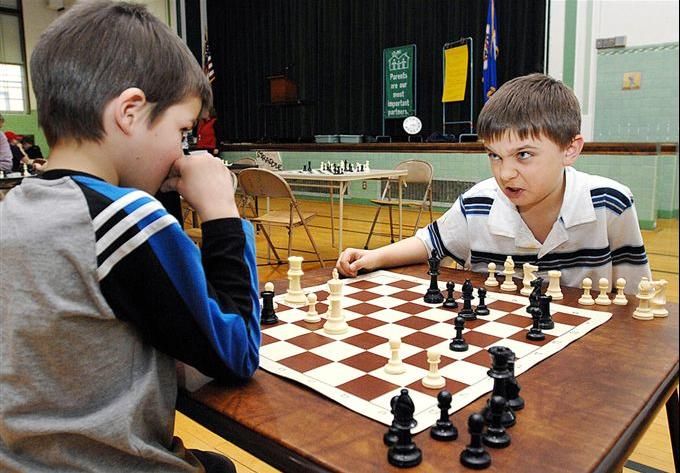
Then, a few months later, my father, who is a chess enthusiast, convinced me to play online with him, and now I’ve returned to chess after a literally 25-year break (indeed, the last time I played with any consistency was with Dan himself, during recess in third grade – I have very happy memories of these sessions, which probably says all that needs to be said about our social functionality in those days). And although I obviously knew the rules of chess as a child, it’s become very clear that I never knew, and still don’t know, the first thing about actual strategy (beyond the most basic tactical considerations). There is something really delightful about that steep learning curve phase of learning about something when everything seems new and confusing, and only slowly do the, ahem, pieces start to fit together. (Pawn structure? Control the center of the board? Material?! Tempo?!?!) And, of course, that same “attack/defend” dynamic momentum is present here, too, although in a far subtler and less obvious guise than in boxing – my problem so far is that whereas I can make reasonable decisions about how to defend against attack, and occasionally can turn the tables on my (thus far, always superior) opponents, I never know what to do with the “tempo” once I’ve regained it, and I quickly squander it.
Finally, there is the spectacle of the World Cup, which was just finishing when I started writing this post, which says about all that needs to be said about my blog posting lately. I also played soccer as a child, but I was always one of the worst players on the very worst teams in my youth soccer league, and it has tended to remind me of the sorts of experiences Dan and I were trying to avoid when we huddled around the chess board at recess. And, as with boxing, I’ve never paid the slightest attention to it as a spectator sport. This time around, I got drawn in enough to get up at ungodly hours to catch some of the games from the West Coast of the U.S. And although I really enjoyed the athleticism, teamwork, etc. of the play itself, I particularly loved being confronted with the intense level of mythology and history that accompanied each game, as the announcers spoke of matches in the 1950s as if they happened last week, and associated certain styles of play with certain teams/regions. And again, I’ve had a steep learning curve of picking up on the strategic and tactical considerations that affect the momentum of each game.
It is starting to seem like all of life is just a series of circumstances where the question is whether to press the advantage, or retreat and defend.




